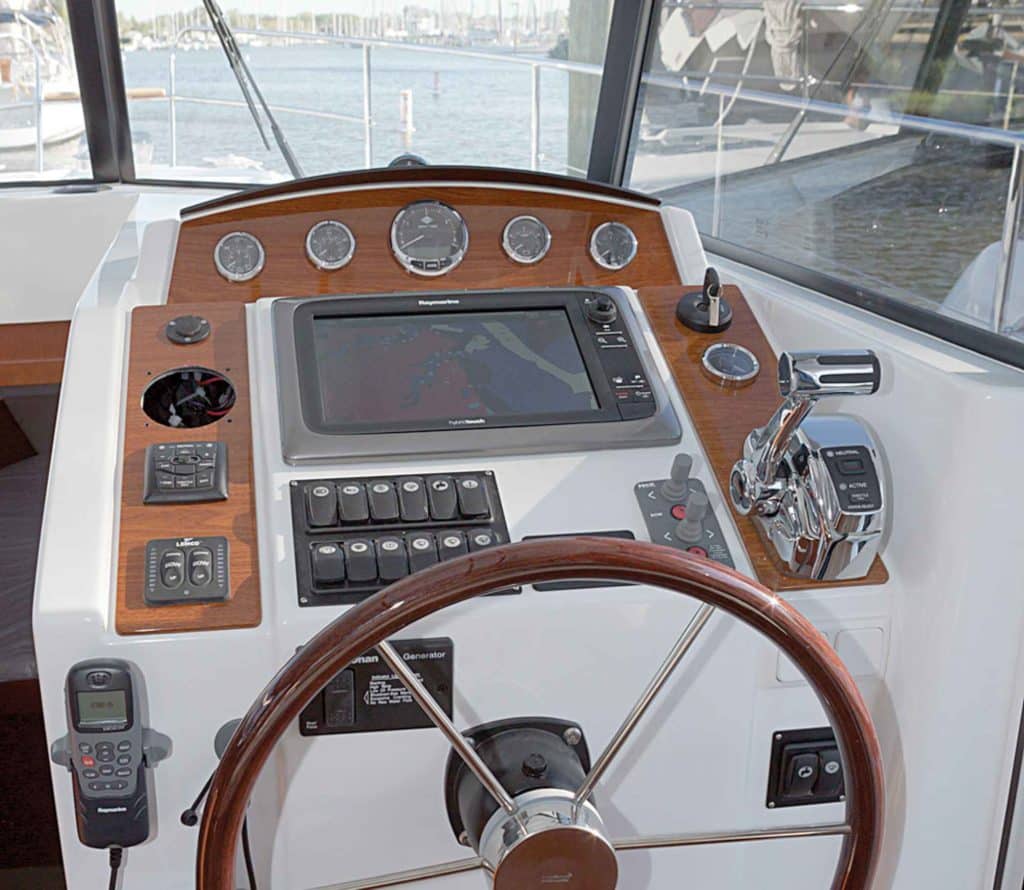
Q. Last season I had to turn back to port twice because of electronics failure. What can I do to help minimize such equipment failures?
A. I suggest some simple benchmarks to verify that your marine electronics are working properly before you leave port, including:
1. Make a radio check to confirm you are transmitting and receiving properly.
2. Confirm your position dockside with your GPS. Make a range and bearing check with a known point of reference. Become familiar with how many satellites you normally receive and their relative strengths. This will let you know if your GPS is operating normally.
3. When leaving port, make sure your autopilot has no difficulty holding a course and responds properly to steering commands.
4. Check your radar by viewing familiar targets on long and short ranges to make sure they appear normal.
These quick reference checks can verify that your electronics are ready for sea duty, as well as serve as an early warning for possible pending failures.
Another way to avoid electronics failures is with a periodic preventive maintenance inspection, which you can do yourself.
Voltage Loss
Guard against a drop in electrical voltage, which can cause equipment to stop working or limit its performance. Inspect all connections from the battery to your electronics. Be alert for any loose connections, which can over time result from a boat’s normal impacts when underway. Be alert to corrosive buildup on terminals and electrical connections.
Batteries
Check batteries routinely. Buy a multimeter and learn how to use it. This is one of the handiest instruments for finding, correcting and preventing electricity-related problems.
Consult the Manual
Be sure you have a manual for each electronic device you have on board. The troubleshooting section can tell you what to do for each instrument’s most common problems. Don’t have a manual? Most manuals can be downloaded for free from the manufacturer’s website.
Troubleshooting Tips
Pull the plug! Just like your computer, when your GPS/chart plotter, fish finder, radar or other gear locks up or fails to respond to the controls, sometimes disconnecting the power cable or switching off the set’s circuit breaker and reapplying power can restore normal operation.
In extreme cases, when all else fails, you can perform a “master reset.” Follow the instructions in the owner’s manual for the unit. Be advised that this is a last-resort procedure. A master reset can also delete all your waypoints, routes and custom settings. Quick tip: Regularly back up your waypoints and other entered data on a blank data card (refer to the unit’s owner’s manual for instructions on how to back up your waypoint list and other valuable data).
Be sure you know the location of every fuse for every electronics instrument you have. And keep an adequate supply of each fuse size on board.
Redundant Systems
Consider installing a second VHF radio and GPS/chart plotter. With a modest investment you can have independent redundancy for these essential instruments.
Keep a handheld VHF and GPS as part of your electronics lineup. Basic models are very affordable, serve as portable second stations and stand ready to go with you if you ever have to leave your boat in an emergency. Combination sets like the Icom IC-M92D ($299, icomamerica.com) and Standard Horizon HX870S ($249, standardhorizon.com) combine a VHF and GPS in a single handheld device. The bonus is that the radio and GPS are already connected internally, so the set’s DSC emergency button is ready for use as soon as you obtain, register and enter your personal Mobile Maritime Service Identity (MMSI) number (available for free at boatus.com). Both of these sets are waterproof and floatable and will operate even in the event you find yourself in the water.
Always keep fresh batteries for every portable device you carry on board. And, if you don’t already have one, install a 12-volt cigarette lighter outlet to charge all of your handheld devices that have rechargeable batteries.









